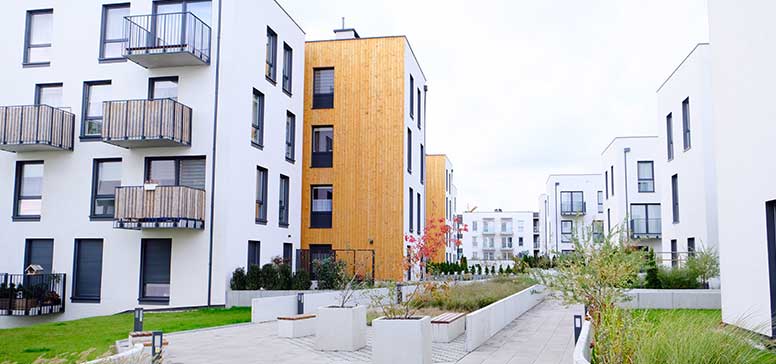Leading Myths About HOA Condo Life Debunked
Leading Myths About HOA Condo Life Debunked
Blog Article
The Duty of an HOA in Developing and Enforcing Neighborhood Standards for Residents
The role of a Homeowners Organization (HOA) in enforcing and establishing neighborhood standards is essential to maintaining a organized and natural residential atmosphere. By formulating clear policies that control elements such as residential or commercial property upkeep and neighborhood conduct, the HOA not just sets criteria for homeowners however likewise fosters a sense of belonging and accountability.
Understanding House Owners Associations
Homeowners organizations (HOAs) serve as controling bodies for household areas, playing an important role in preserving residential property worths and promoting a sense of community. Commonly created by developers, HOAs are made up of home owners within a designated area who elect a board to look after the organization's activities. The key functions of an HOA include implementing area guidelines, taking care of typical areas, and organizing community events.
HOAs run under a collection of controling documents, including limitations, agreements, and conditions (CC&R s), which lay out the rights and duties of home owners. These policies aim to guarantee that residential or commercial properties are kept to a certain requirement, thus shielding the aesthetic allure and general value of the community. In addition, HOAs often accumulate dues from home owners to money maintenance, landscaping, and various other social work.
The presence of an HOA can dramatically influence the living experience within a neighborhood (hoa condo). While some homeowners value the structured setting and facilities offered, others may locate certain laws restrictive. Stabilizing the interests of all house owners is necessary for an HOA to function properly, ensuring that it serves its designated function of boosting area living while appreciating private homeowner civil liberties
Creating Community Guidelines

To start, an HOA ought to conduct surveys or hold conferences that enable residents to voice their recommendations and worries. This participatory procedure promotes a sense of possession and increases conformity. Next off, the HOA board should analyze the responses to recognize typical themes and top priorities that require official incorporation in the guidelines.
It is also necessary to make sure that the guidelines are clear, succinct, and easily comprehended. Ambiguities can result in misunderstandings and conflicts, undermining the purpose of the guidelines. The standards should be thorough, covering different elements of community living, including property maintenance, sound degrees, and use of common locations.
Enforcement of Rules
Reliable enforcement of neighborhood rules is critical for keeping order and ensuring that all citizens comply with the developed guidelines. An HOA must execute a structured technique to impose these laws, which usually includes a combination of tracking, interaction, and penalties for non-compliance.
First, normal evaluations and neighborhood patrols can help identify offenses, ensuring that regulations are regularly applied across the neighborhood. This proactive monitoring permits the HOA to resolve problems prior to they escalate, cultivating a sense of accountability among locals.
Second, clear interaction is vital. Citizens need to be educated of the guidelines and the procedures for reporting violations. An open line of communication motivates homeowners to voice issues and look for clarification on standards, which can improve conformity.

Finally, when violations occur, the HOA must implement repercussions as outlined in the controling papers. By efficiently implementing guidelines, an HOA can cultivate a harmonious living setting that reflects the cumulative values of its locals.
Benefits of HOA Laws
Many benefits occur from the application of HOA policies, which best site serve to improve the lifestyle within an area. One primary advantage is the upkeep of home worths. By enforcing standards for looks and maintenance, HOAs make certain that homes and common areas continue to be attractive, promoting a preferable living atmosphere that can lead to raised property values over time.
Furthermore, HOA guidelines promote consistency and harmony within the neighborhood. This comprehensibility in style and maintenance assists to create a feeling of belonging among citizens, adding to neighborhood satisfaction and a favorable atmosphere. In addition, developed guidelines promote conflict resolution amongst neighbors by offering clear expectations and procedures for behavior, thereby lessening disagreements.
An additional considerable advantage is the provision of common amenities and services. Lots of HOAs manage neighborhood centers such as parks, clubhouses, and pools, which enhance recreational possibilities for residents. These services not only enhance the top quality of life yet additionally encourage social communication.
Ultimately, the regulations established forth by an HOA cultivate an efficient, unified area, guaranteeing that residents delight in a high requirement of living while fostering an encouraging environment for all homeowners.
Common Obstacles Encountered by HOAs
Among the benefits that home owners organizations (HOAs) can give, they also come across a selection of obstacles that can hinder their efficiency. One significant issue is the lack of resident engagement. Lots of homeowners might not take part in conferences or community tasks, more information bring about a detach between the HOA board and homeowners. This disengagement can cause misunderstandings concerning neighborhood guidelines and an absence of assistance for enforcement efforts.
Conflicts can arise when locals really feel that enforcement is irregular or biased, potentially leading to conflicts within the area. Furthermore, HOAs frequently deal with economic restraints, which can limit their ability to preserve common locations or fund neighborhood projects.
Furthermore, browsing legal complexities can be intimidating for HOAs. They have to ensure conformity with state regulations while managing their own controling papers, which can be a source of confusion. Last but not least, transforming demographics and progressing community needs require HOAs to adapt their guidelines, typically meeting resistance from long-standing residents who are accustomed to standard standards. Addressing these difficulties is critical for promoting a flourishing and unified community.
Verdict

By formulating clear regulations that regulate facets such as residential property upkeep and area conduct, the HOA not only establishes standards for residents however also promotes a sense of belonging and responsibility.Homeowners associations discover this (HOAs) serve as regulating bodies for domestic communities, playing a vital role in keeping residential property values and cultivating a sense of area. Lots of house owners might not get involved in conferences or neighborhood tasks, leading to a separate between the HOA board and locals. Advancing and altering demographics neighborhood needs require HOAs to adjust their standards, frequently fulfilling resistance from long-lasting homeowners that are accustomed to traditional standards. Via the advancement of clear policies and constant enforcement, HOAs advertise property upkeep, area satisfaction, and trust amongst locals.
Report this page